How to Use Data to Close More Deals
Although we have access to more data than ever before, the majority of decisions are still not made based on data.
When developing a data-driven lead generation strategy, you must distill your data in order to make informed decisions around what’s working and what’s not.
But, when you have mountains of data at your disposal, it can often feel overwhelming and messy rather than informative.
In this blog, we’ll talk about how to use lead generation analytics for more efficient, data-driven lead generation, including 10 of the most important lead generation metrics to track for success.
Why data-driven lead generation matters
According to McKinsey, organizations that use analytics effectively are:
- 23x more likely to outperform competitors
- 19x more likely to achieve above-average profitability
- 3x more likely to retain customers
- 2.6x more likely to have a significantly higher ROI
Data-driven lead generation is essential because it helps you understand the ROI on every marketing campaign to maximize high-quality leads and conversions.
Not only is data important for identifying strong performance, but also identifying what’s not working and where to make changes.
By leveraging your data, you can better understand where the budget should be cut and where you should double down.
Without using data to make your decisions, you can end up:
- Overspending on underperforming channels
- Missing high-value opportunities
- Suffering from sales and marketing misalignment
- Ignoring hidden patterns
10 ways to use lead generation analytics
There are so many data points involved in lead generation—what do you do with all the information at your disposal?
Let’s discuss 10 practical ways to use lead generation analytics in order to maximize ROI.
1. Segment by lead source.
Say you’re generating thousands of leads per month—it’s important to understand where these leads are coming from, and how each source is converting.
Not all sources are created equal. Some bring in more volume, while others bring high quality.
For example, paid search might bring 5,000 leads/month, but only convert at 2%, while referrals are far fewer, but convert at 10x the rate.
You should be able to analyze lead volume by source; you can do this by using UTM parameters and CRM source fields. From there, you can segment by source to understand engagement rates, qualification rates, and lead-to-customer rates.
2. Calculate cost per lead (CPL) by lead source.
The next step in accurately understanding your ROI is to understand cost per lead (CPL) by source. You can do this by looking at your spend per month by source and dividing that by the lead volume by source.
For example, leads from social media can cost just a few dollars per lead, while leads from Google Ads can cost over a hundred dollars.
Understanding how much each lead costs, and the conversion rate by source, allows you to evaluate the lead source accurately.
3. Evaluate ROI by lead source.
When it comes to overall marketing ROI, understanding ROI per lead source is paramount.
After segmenting by lead source, you can calculate ROI by lead source by subtracting the cost of the leads from the revenue earned from that source over that period of time, and divide it by the cost once more. If you multiply that by 100, you’ll get the ROI as a percentage.
For example, if a lead source costs $10,000 to generate leads, but leads to $100,000 in revenue, you have an ROI of 900%.
Basically, you want to answer the question: if you spend X amount of dollars on a lead source, how much can you expect to make?
Use this formula for each lead source to understand their rates of return.
4. Monitor qualification rates.
Many marketing and sales teams struggle with balancing lead volumes with lead quality.
Tracking qualification rates over time helps you:
- Benchmark lead quality (understand where your baseline is, and if you’re happy with that).
- Monitor lead quality (if qualification rates dip, you’ll know something is wrong).
- Better understand which lead sources return the most qualified leads (so you can double down on these).
Besides ROI per lead source, knowing your qualification per lead source will also help you understand which sources to double down on. Qualified leads are worth more, especially when they convert at a high rate.
5. Understand unqualified reasons.
When leads are unqualified, it’s not always the end of the journey.
Understanding reasons why leads are unqualified helps you focus your efforts and:
- Avoid certain types of leads that are often (or always) unqualified
- Tweak qualification criteria (if necessary)
- Target the right unqualified leads with re-engagement efforts
For example, if leads are often unqualified due to bad contact info, you could check your forms and make sure that they only accept legitimate phone numbers.
6. Set up nurture for unqualified leads.
Lead nurture is an extremely important step to making the most out of your lead generation investment. Stopping contact for unqualified leads can waste valuable pipeline potential.
Many “not ready yet” leads can convert down the line with proper nurture.
Use lead scoring and behavior tracking. Segment leads by relevant traits, which can include unqualified reasons, to serve them the most personalized nurture content.
For unqualified leads, you can set up specific nurture tracks to foster interest and trust over time.
For example, if a lead is unqualified due to insufficient credit right now, it can be beneficial to nurture that lead—when they build up their credit, you still want to be at the top of their mind.
7. Allocate budget effectively.

Once you understand CPL, ROI, and qualification rate by lead source, you should have a pretty good idea of what is working best for your business, and what is not.
Now it’s time to use those numbers to make the most out of your lead generation budget.
Ask questions like:
- Is the CPL within a reasonable range?
- Is the source returning qualified leads?
- Is the lead source generating revenue?
- How do the lead sources compare?
Double down on high-performing lead sources, and pull back or eliminate sources that are not returning high ROI, efficient CPL, or comparable qualification rates.
It’s important to take a balanced approach that prioritizes ROI.
For example, if a lead source generates high volumes but low qualification rates, you should evaluate the cost to close ratio.
If the lead source is expensive, but those leads often go on to close, it might be worth doubling down on.
8. Track speed-to-lead.
When it comes to lead generation, speed-to-lead can have a huge effect on your conversion rates.
- Contacting leads within 5 minutes makes them 21x more likely to convert.
- 66% of consumers expect a response from customer service in five minutes or less.
- 78% of leads will choose the organization that contacts them first.
- In a study, leads were 7x more likely to qualify when contacted within an hour (compared to two hours) and 60x more likely compared to 24 hours or longer.
It’s vital to track your speed-to-lead for quality assurance and, if your times are longer than five minutes, on the basis of improvement.
Ensuring that your average time to contact is within the 5-minute window will help you make the most of your hard-earned leads.
9. Organize lead data effectively.
Businesses have access to mountains of data, and sometimes that can feel overwhelming and messy. It’s easy to fall into silos with data in multiple places.
However, in order to use, understand, and track your lead and lead source data, it must be well-organized and accessible.
Data should be both centralized and broken into categories, including:
- Lead source
- Engagement rate
- Qualification rate and status
- Conversion rate and revenue generated
Use consistent naming conventions and organize consistently by time period (month, quarter, etc.).
You can use simple tools like your CRM or even a spreadsheet to keep this data centralized and organized.
Business intelligence (BI) dashboards are even better, as they can automate, centralize, and organize data in a customizable way.
10. Align sales and marketing around metrics.
Lead generation is a team effort between sales and marketing. However you choose to organize your data, this should be accessible for both marketing and sales.
For both teams, lead quality is extremely important. Keep open feedback loops for:
- Discussing shared and separate KPIs
- Sales to share lead feedback based on real outcomes
- Lead source trends
- Speed-to-lead metrics
- Suggestions for improvement
Ensure that lead quality and follow-up time are visible for both teams, and schedule regular meetings to review for progress and continual improvement.
Service level agreements (SLAs) can be made for follow-up speed, lead acceptance, and pipeline feedback.
Data-driven lead generation: Key takeaways
Data-driven lead generation isn’t just about tracking—it’s about acting.
When you organize your data, track lead source performance, monitor qualification and conversion rates, and nurture unqualified leads with intention, your lead generation engine runs smoother and delivers stronger results.
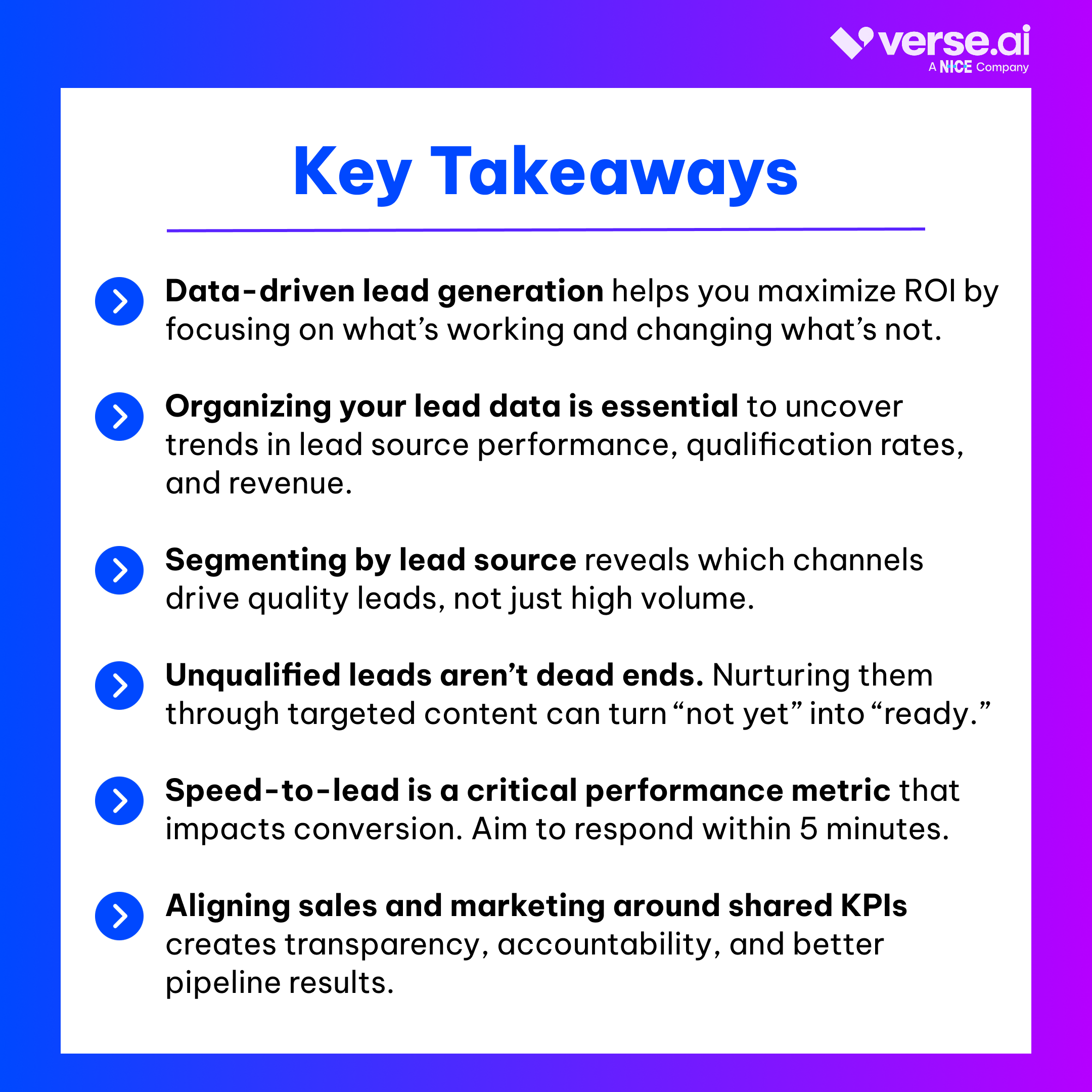
If you’re looking to take your data-driven strategy to the next level, consider tools that support real-time engagement, qualification, and performance visibility can help you move from insight to impact—without the guesswork.
Lead generation analytics example: Verse business intelligence
At Verse, we’ve worked for ten years to build out our business intelligence (BI) dashboard with the right lead generation analytics and insights.
By pulling data from client CRMs, Verse helps them understand different lead sources and how those leads compare in terms of conversion, qualification, and overall ROI.
The data is not based on how Verse is performing, but really how their marketing spend is working overall.
For example, you can see response rate, qualification rate, and total volume by lead source. Filtering capabilities allow them to slice and dice the data and look at different date ranges, lead types, and lead sources.
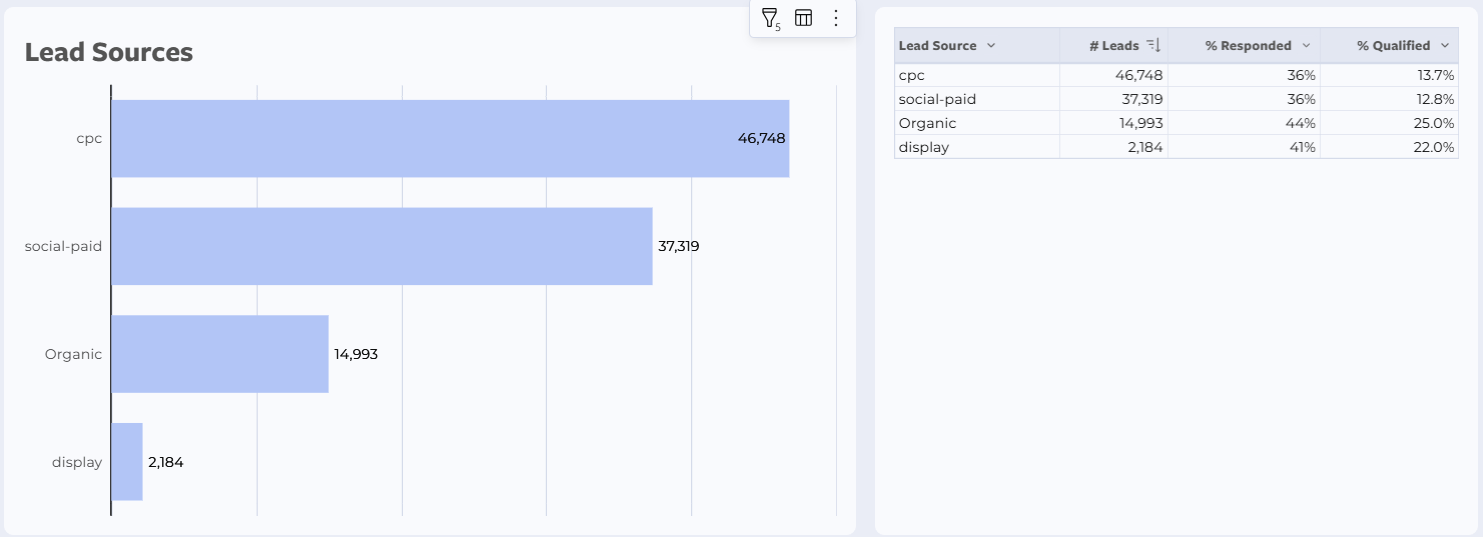
We also provide insight into leads that aren’t qualified, as well as unqualified reasons. Just because leads weren’t qualified at the time, it doesn’t mean that they can’t be useful later on.
For every business, there could be different paths, different questions to ask. For example, if a lead is unqualified due to bad credit, the next step could be referring to a partner, and funneling the right leads to a different arm of the business.
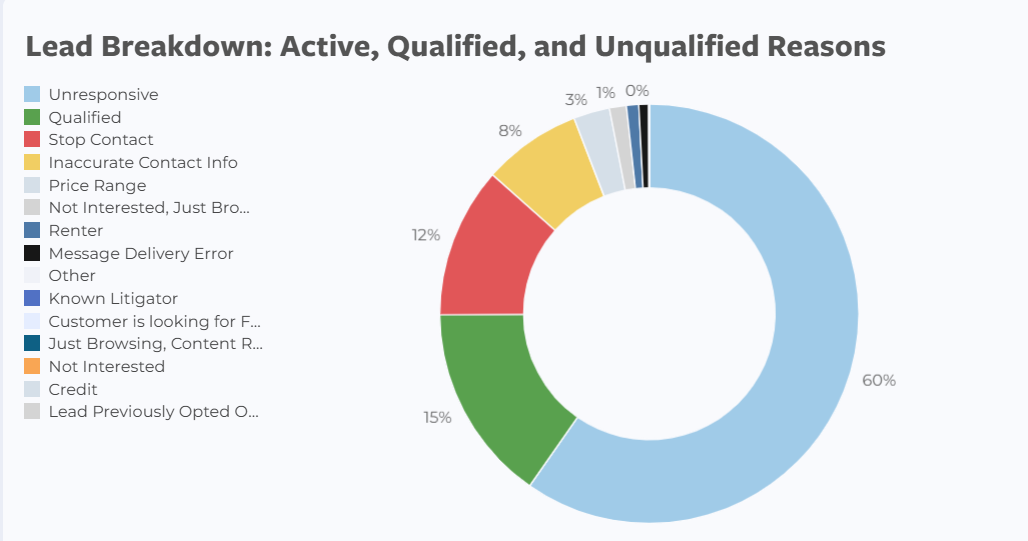
We also give insight into how many leads have come in in a certain time range, as well as how much communication is going out to those leads.
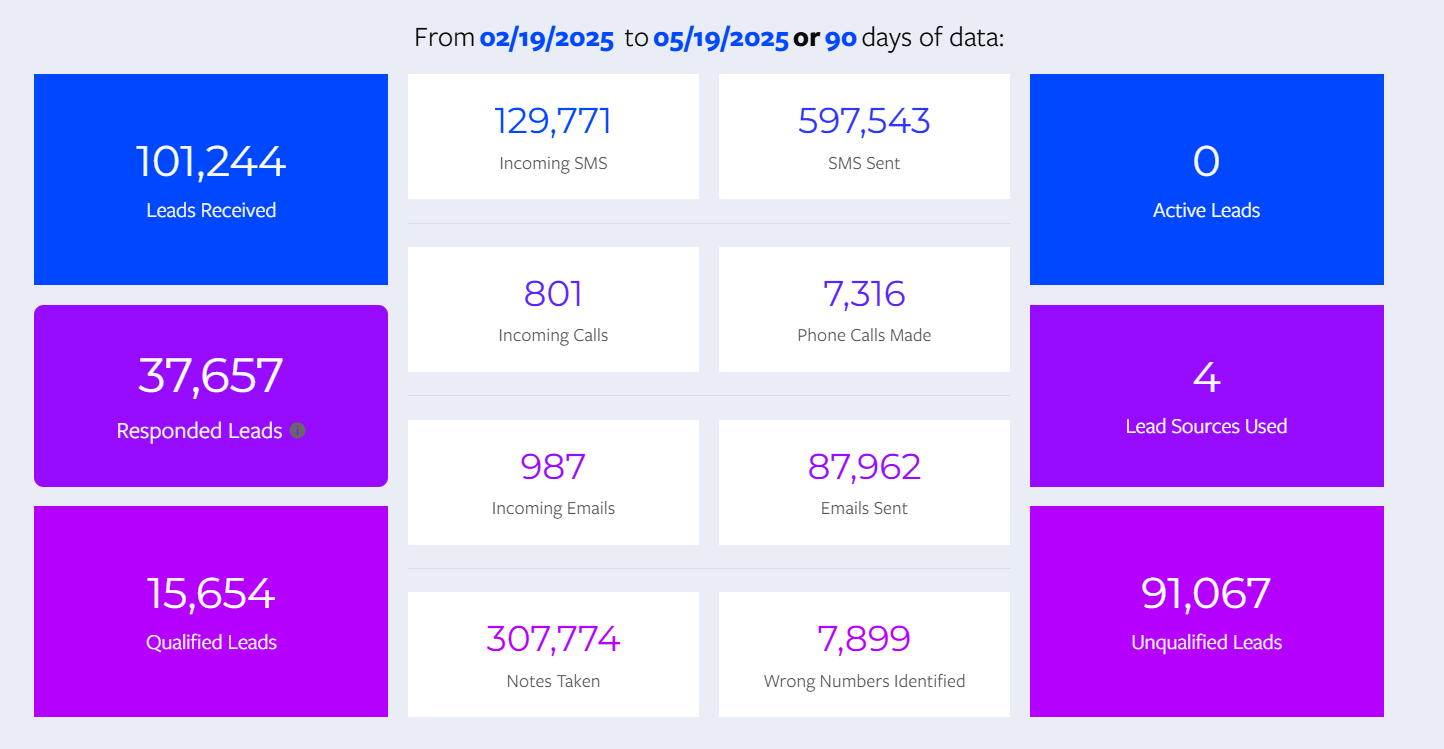
You can also see team member or location performance at a glance.
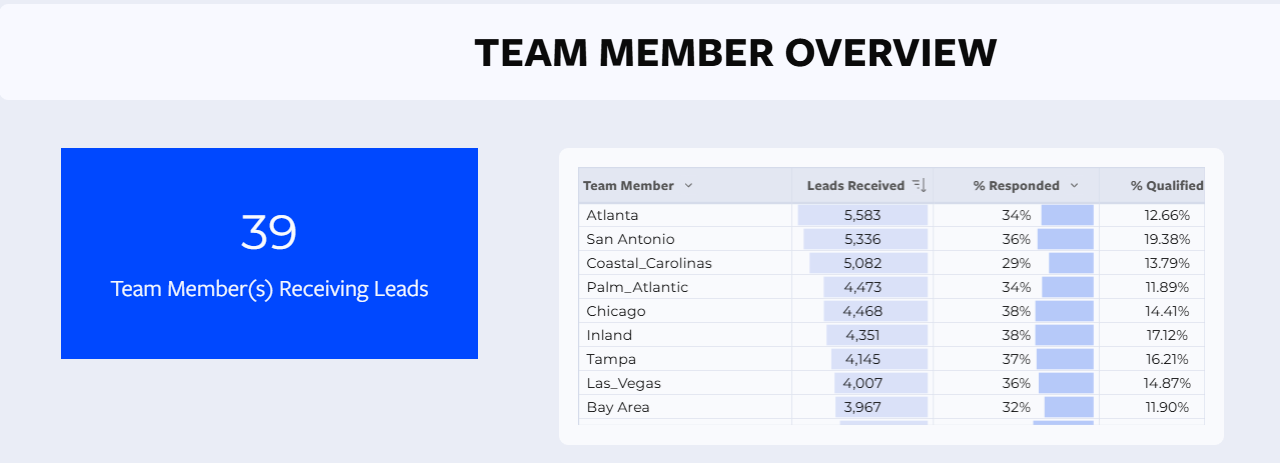
While Verse’s speed-to-lead is essentially instant, we also track things like how fast leads respond and qualify.
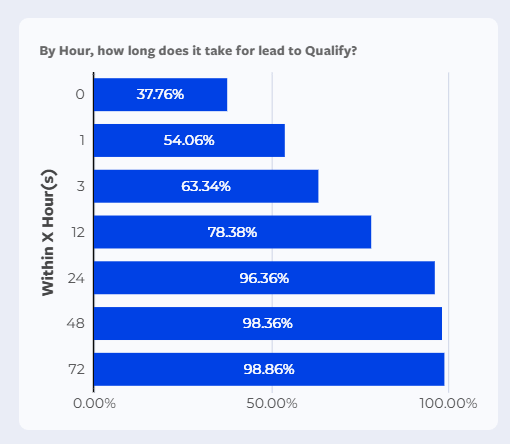
In addition, we provide conversion and revenue generation metrics, as well as metrics around Verse’s performance for the client.
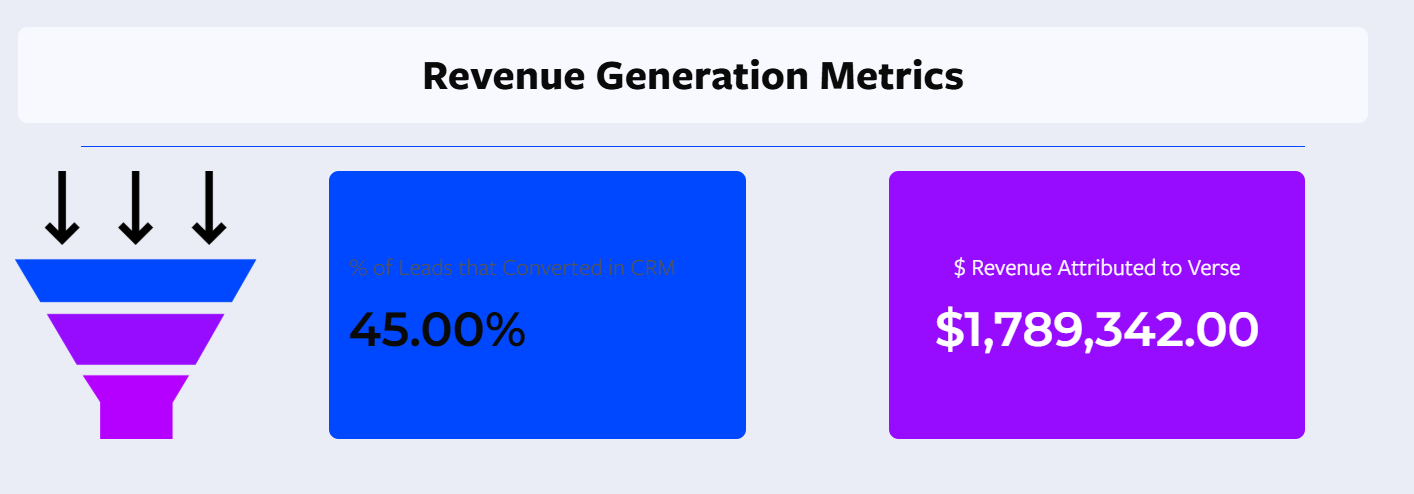
We can also create custom dashboards for any client that track criteria of their choosing.
Our insights are not only for identifying strong performance, but identifying what’s not working and where to make changes. They are not simply to prove Verse’s value, but to help the client make changes that benefit their lead generation engine the most.
See a video demo of Verse and our analytics here or book a demo today to learn more.
Data-driven lead generation: FAQs
1. What is data-driven lead generation?
Data-driven lead generation is the practice of using analytics to guide how you generate, qualify, and convert leads. You can track metrics like lead source performance, qualification rates, and conversion rates to make smarter decisions and improve ROI.
2. What are the most important lead generation KPIs to track?
Some of the most valuable KPIs include:
- Lead volume by source
- Cost per lead (CPL)
- Qualification rate
- Conversion rate
- Return on investment (ROI)
- Speed-to-lead
3. Why is it important to segment lead data by source?
Not all lead sources are created equal. Some generate high volumes but low conversion, while others drive fewer but more qualified leads. Segmenting by source helps you double down on what works and cut what doesn’t, which improves efficiency and budget allocation.
4. Should I still nurture unqualified leads?
Yes. Many unqualified leads aren’t a bad fit—they’re just not ready yet. Nurturing these leads with personalized content and timely follow-up keeps your brand top-of-mind and gives you a better chance of converting them when they’re ready to buy.
5. How can I align sales and marketing around lead generation analytics?
Create shared dashboards, define joint KPIs, and hold regular review meetings. Use tools like CRMs or BI dashboards to give both teams visibility into lead quality, follow-up speed, and pipeline trends.


